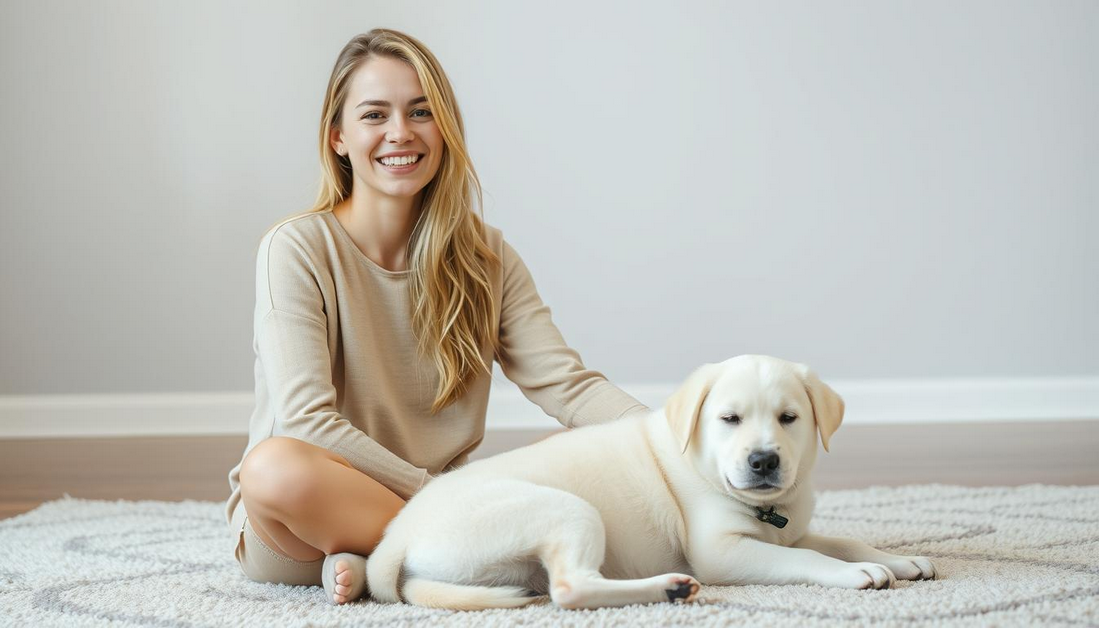India customers to view on amazon.in
Helping Adopted Pets Feel Safe and Loved
Bringing an adopted pet into your home is a rewarding and transformative journey. However, building a bond takes time, empathy, and a nurturing touch. Since many rescue animals come from difficult or distressing backgrounds, they may need extra support to feel secure and comfortable in their new surroundings.
- Recognizing the Emotional Journey of Adopted Animals
- Understanding Trauma in Rescue Pets: Why Trust Takes Time
- The Stress of Shelter Life
- The Lasting Effects of Abandonment and Mistreatment
- Why Some Adopted Pets Struggle to Trust
- Recognizing Protective Behaviors
- Different Animals, Different Trust Journeys
- Creating a Secure Space for Your Adopted Pet
- Designing Their Personal Safe Space
- Tailoring Spaces to Fit Species Needs
- Providing Familiar and Soothing Items
- Reducing Household Stress Triggers
- Pet-Proofing for Safety and Peace of Mind
- The First Week: Critical Period for Trust Building
- Establishing Consistent Routines For Security
- Using Body Language to Earn an Adopted Pet’s Trust
- Gentle Gestures That Encourage Comfort
- Approaching Pets Based on Their Nature
- Behaviors That Can Cause Discomfort
- Noticing What Your Pet Is Telling You
- Clues That Reveal Fear or Comfort
- Adjusting Your Reactions with Care
- Strengthening Bonds Through Thoughtful Communication
- Speaking in Soothing Tones
- Rewarding Good Behavior the Right Way
- Building Trust with Treats
- Verbal Praise That Connects
- Touch That Builds Connection and Comfort
- Safe and Calm Ways to Initiate Contact
- Letting Your Pet Set the Pace
- Step-by-Step Introduction to Gentle Contact
- Trust-Building Through Reward-Based Training
- Simple Commands That Create Structure
- Training That Supports Anxious Pets
- Precision and Clarity With Clicker Training
- Fostering a Peaceful Home Environment for Your Adopted Pet
- Helping Kids Interact Kindly with New Pets
- Introducing Your New Pet to Resident Animals
- Building Comfort with Guests and Strangers
- Addressing Specific Trust Challenges
- Supporting Food-Aggressive Pets
- Understanding and Managing Trigger-Based Fears
- Handling Aversion to Physical Contact
- Conclusion: Building a Lifetime Bond with Your Adopted Pet
- FAQ
- How long does it usually take an adopted pet to settle into a new home?
- What behaviors might indicate my adopted pet is feeling anxious?
- What’s the best way to manage food aggression in a newly adopted pet?
- How should I introduce my adopted pet to other animals at home?
- How can I get my pet used to being touched or handled?

Earning the trust of a newly adopted pet lays the foundation for a lasting and loving relationship. When you tune into their emotional needs and offer consistent care in a secure space, your pet begins to feel safe, respected, and loved.
Key Takeaways
- Acknowledge the emotional hurdles adopted animals may face
- Create a calm, comforting home atmosphere
- Use gentle interactions and positive reinforcement
- Keep daily routines to boost familiarity and reduce anxiety
- Show affection regularly to build emotional connection
Recognizing the Emotional Journey of Adopted Animals
Every adopted pet carries a history, and for many, that past includes neglect, abandonment, or trauma. These experiences can leave emotional scars that manifest as fear, mistrust, or withdrawal. As a pet parent, understanding these unique psychological challenges is key. Rather than expecting immediate affection or obedience, it’s important to approach them with compassion and realistic expectations.
Understanding Trauma in Rescue Pets: Why Trust Takes Time
Adopted animals often arrive with emotional wounds shaped by challenging pasts. Whether they’ve spent time in shelters, faced neglect, or suffered abuse, these experiences can deeply influence their ability to trust humans.

The Stress of Shelter Life
While shelters offer protection and care, the environment can be overwhelming. Constant noise, limited personal space, and unfamiliar routines can make animals feel anxious and on edge. This heightened stress can carry over into their new home, making the adjustment period more difficult.
The Lasting Effects of Abandonment and Mistreatment
Animals who’ve experienced abandonment or abuse often struggle to trust again. They may be cautious, overly alert, or even defensive. These behaviors aren’t signs of a “bad” pet—they’re self-protective habits formed during tough times. Earning their trust means showing them that not all humans are a threat.
Why Some Adopted Pets Struggle to Trust
Fear-based reactions and guarded behaviors often stem from an animal’s survival instincts. These instincts, shaped by past trauma, lead pets to be wary of new people, surroundings, or even routines. Recognizing this isn’t misbehavior, but a response to past pain, is crucial in supporting their healing.
Recognizing Protective Behaviors
Adopted pets may growl, hide, flinch, or act out—not out of aggression, but out of self-preservation. These are coping strategies they’ve developed in response to past trauma. Building a relationship means responding with patience, not punishment, and offering steady reassurance over time.
Different Animals, Different Trust Journeys
Every species—and every pet—has its own way of expressing and building trust. Dogs, for example, might seek approval but may hesitate to approach if scared. Cats may retreat and require more space. Tailoring your care to the specific emotional needs of your pet’s species can make the bonding process smoother and more successful.
| Species | Common Trust Challenges | Tailored Approach |
|---|---|---|
| Dogs | Fear of abandonment, obedience issues | Positive reinforcement training, consistent routines |
| Cats | Independence, fear of touch | Gradual touch desensitization, respecting personal space |
Creating a Secure Space for Your Adopted Pet
Helping a newly adopted pet feel safe begins with creating a calm, welcoming environment. A stable home base is essential for their emotional recovery and smooth transition into a new life.
Designing Their Personal Safe Space
One of the first steps is setting up a quiet, designated area where your pet can relax without interruption. This personal zone acts as their sanctuary when they’re feeling unsure or overwhelmed. It should be peaceful, enclosed if needed, and away from high-traffic parts of the home.
Tailoring Spaces to Fit Species Needs
Different animals have unique comfort preferences. For example, dogs often appreciate a crate or enclosed nook with soft bedding where they can feel secure. Cats, on the other hand, may seek out elevated or hidden spots where they can observe quietly from a distance. Paying attention to what makes your pet feel most at ease will help you build the perfect retreat.
Providing Familiar and Soothing Items
Including comforting items in their space can make a big difference. A blanket, a favorite chew toy, or an old T-shirt that carries your scent can help reassure them. These familiar smells and textures promote a sense of safety and reduce feelings of isolation.
Reducing Household Stress Triggers
Loud noises, unfamiliar visitors, or even other pets can be overwhelming for a newly adopted animal. Whenever possible, limit exposure to potential stressors. Slowly introduce them to new spaces and people at a pace that’s comfortable for them, allowing time to adjust.
Pet-Proofing for Safety and Peace of Mind
Beyond comfort, safety is a top priority. Remove sharp objects, secure electrical cords, and store harmful substances like cleaning supplies out of reach. If your pet is prone to anxiety, try to reduce exposure to known triggers like sudden noises or chaotic environments. Small changes can significantly increase their sense of safety.

The First Week: Critical Period for Trust Building
The early days with a newly adopted pet are a pivotal time for building trust and offering reassurance. This initial adjustment phase lays the groundwork for a strong, long-term bond and helps your pet begin to feel at home in their new surroundings.
Day-by-Day Adjustment Timeline
Knowing what to expect in the first days and weeks can guide your approach and make the transition smoother for both you and your pet. Here’s a general outline of how the adjustment process may unfold:
The First 24 Hours
This is a time for quiet observation and gentle introductions. Keep your pet’s space calm and predictable. Allow them to explore at their own pace without overwhelming them with attention. Offer food, water, and access to their designated comfort zone, but avoid forcing interaction.
Week 1
During the first week, your pet will start to explore more and slowly build familiarity with your routine. They may still be cautious, especially around new people or noises. Keep interactions positive and consistent, and begin to establish a basic daily routine that includes feeding, short playtimes, and rest.
Weeks 2 to 4
By the second and third weeks, your pet may begin showing more personality as they grow more comfortable. They may seek out more interaction or start engaging with toys and family members. This is also a good time to gently introduce training basics and reinforce trust through praise, treats, and consistency. Some pets may still experience moments of fear or hesitation, which is entirely normal during this stage.
| Week | Expected Behavior | Actions to Take |
|---|---|---|
| 1 | Fearful, hesitant | Provide a safe space, minimal interaction |
| 2-3 | Exploratory behavior | Encourage exploration, start basic training |
| 4 | Increased confidence | Gradually increase socialization and exercise |
What to Do and What to Avoid
The first week with your adopted pet is a delicate time that requires a thoughtful balance of reassurance and gentle structure. Your actions during this period can significantly influence how quickly your pet adapts to their new surroundings.
Creating a peaceful and consistent environment is key. Sudden movements, loud voices, or overwhelming activity can increase your pet’s anxiety. Instead, aim for calm, quiet interactions that help them feel secure.
Helpful actions include setting a predictable daily routine, offering a designated comfort area, and giving your pet space to adjust at their own pace. It’s important to be patient and let trust develop naturally.
On the other hand, avoid forcing interactions, especially if your pet seems hesitant or withdrawn. Allow them to initiate contact when they feel ready. Punishing nervous or fearful behaviors can backfire, reinforcing anxiety instead of resolving it. Focus on understanding and compassion to help your pet settle in safely and confidently.

Establishing Consistent Routines For Security
For adopted pets, a steady routine can be one of the most comforting aspects of their new life. When each day follows a familiar rhythm, it helps reduce uncertainty and allows your pet to begin trusting their surroundings. Predictability is a powerful tool in easing anxiety and promoting emotional stability, especially for animals who’ve experienced past trauma.
Feeding Schedules That Build Confidence
Setting and maintaining a consistent feeding schedule plays a key role in helping your pet feel safe and cared for. Feeding your pet at the same times every day—such as in the morning and evening—creates a reliable structure they can count on. This consistency not only supports physical health but also sends a clear message that their needs will be met.
During mealtime, speak softly and approach your pet with calm energy. These simple habits make feeding moments feel positive and secure, helping to deepen the bond between you and your new companion. With time, your pet will begin to associate you with comfort, nourishment, and safety.

Matching Playtime to Your Pet’s Energy and Personality
Physical activity and mental stimulation are vital parts of your pet’s daily routine. However, not all pets have the same energy levels or play preferences, so it’s important to adapt your approach based on their personality.
For pets that are naturally energetic or curious, activities like fetch, agility games, or extended walks can help release built-up energy and reduce anxiety. These sessions keep them fit and mentally engaged.
In contrast, more relaxed or older pets may benefit from low-impact options. Gentle tug toys, puzzle feeders, or slow-paced strolls can be ideal for keeping them active without causing stress or fatigue.
Observing your pet’s reactions to different forms of play will help you develop a balanced routine that keeps them happy, healthy, and connected to you.
| Pet Personality Type | Exercise/Play Recommendation |
|---|---|
| High-Energy | Running, Fetch, Agility Training |
| Laid-Back | Gentle Play, Short Walks, Relaxation Techniques |
| Anxious/Nervous | Calm Walks, Gentle Massage, Quiet Play |
Using Body Language to Earn an Adopted Pet’s Trust
When a rescue pet enters your home, trust isn’t automatic—it’s earned over time through your actions and presence. One of the most powerful tools you can use is your body language. Subtle movements and posture can help your pet feel either secure or uncertain, depending on how they’re interpreted.
Gentle Gestures That Encourage Comfort
The way you physically interact with your pet can either calm or alarm them. Slow, fluid movements and a relaxed posture send a message of safety. Crouching down to their level, keeping your arms loose, and avoiding sudden shifts can reduce tension and promote connection.
Approaching Pets Based on Their Nature
Every animal has different comfort levels with interaction. Dogs may respond positively to a soft voice and an open-handed approach from the side. Cats, on the other hand, often prefer indirect engagement—like sitting nearby or offering a slow blink to show you’re not a threat. Let the animal come to you, rather than rushing toward them.
Behaviors That Can Cause Discomfort
Certain human habits can be unsettling for rescue animals. Avoid walking straight toward them, making loud noises, or holding prolonged eye contact, as these actions may seem threatening. Instead, move slowly, keep your voice soft, and look away occasionally to help them relax.
Noticing What Your Pet Is Telling You
Equally important is understanding how your pet communicates through their own body language. Pay attention to posture, tail position, eye contact, and vocalizations. These cues reveal how your pet is feeling in real time.
Clues That Reveal Fear or Comfort
Fearful pets often retreat, lower their bodies, tuck their tails, or avoid your gaze. If your pet displays these behaviors, give them time and space. On the other hand, signs like approaching you voluntarily, relaxing their body, or wagging their tail in a gentle motion show progress in trust-building.
Adjusting Your Reactions with Care
When your pet shows signs of stress, the best response is calm and quiet support. Resist the urge to force interaction. Allow them to process at their own pace and offer gentle reassurance through presence rather than pressure.

| Pet Signal | Interpretation | Response |
|---|---|---|
| Tucked tail | Fear or anxiety | Give space, gentle voice |
| Relaxed posture | Comfort or trust | Positive reinforcement |
| Avoiding eye contact | Fear or submission | Gentle, calm approach |
Strengthening Bonds Through Thoughtful Communication
How you communicate with your adopted pet plays a vital role in shaping their confidence and emotional security. Clear, compassionate interaction helps ease uncertainty and builds the foundation for a trusting relationship.
Speaking in Soothing Tones
Your voice can be incredibly influential in how your pet perceives you. Using a calm, gentle tone puts your pet at ease, especially in unfamiliar situations. Avoid raising your voice or using sharp tones, as these can trigger anxiety or defensive behavior. Consistency and calmness in your speech can help your pet feel more secure over time.
Rewarding Good Behavior the Right Way
Encouraging your pet with rewards for positive actions is a great way to earn their trust. Whether it’s sitting quietly, responding to their name, or simply approaching you, acknowledging these moments helps your pet associate you with safety and support. Be patient, and reinforce behaviors you’d like to see more often.
Building Trust with Treats
Offering treats is an effective way to create positive associations. Choose high-quality, pet-safe snacks and give them when your pet behaves in a desirable way. Keep the interaction relaxed, and avoid overwhelming them with too much excitement. Over time, your pet will begin to see you as a source of comfort and kindness.
Verbal Praise That Connects
Words of encouragement, when used correctly, can deepen your bond. A soft “good job” or a warm, cheerful “well done” can reinforce positive behavior just as effectively as treats. Be clear and genuine in your tone so your pet can link your words to their actions. This approach helps them feel acknowledged and appreciated.
| Technique | Description | Benefit |
|---|---|---|
| Soft Voice | Speaking gently to your pet | Creates a calming atmosphere |
| Treat Rewards | Using treats to reward good behavior | Encourages positive behavior |
| Verbal Praise | Giving sincere, specific praise | Boosts confidence and security |

Touch That Builds Connection and Comfort
Physical interaction, when done with care, can be one of the most effective ways to earn a rescue pet’s trust. For animals who’ve experienced fear or trauma, gentle contact can reassure them and help them gradually feel safe in your presence.
Safe and Calm Ways to Initiate Contact
When approaching a cautious or nervous pet, keep your movements smooth and unhurried. Avoid leaning over them or reaching out suddenly. Allow your pet to come to you first, and respect their pace. Watch for signs like stiff posture or avoidance—these indicate the need for space and time.
Letting Your Pet Set the Pace
Rather than rushing into petting or cuddling, observe your pet’s comfort level. If they lean in or stay close, that’s a good sign they’re beginning to trust. If they pull away or seem uneasy, give them distance and wait for another opportunity. Your patience during these moments builds emotional safety over time.

Step-by-Step Introduction to Gentle Contact
Begin with very light, short touches in areas where pets typically enjoy contact, like the shoulders or chest. Keep sessions brief and positive, watching for relaxed body language. As your pet grows more comfortable, you can slowly increase the length or area of touch. Pair each step with soft praise and a small treat to help them associate physical interaction with safety and reward.
Knowing When Your Pet Needs Space
It’s important to pay close attention to signs that your pet is uncomfortable. Behaviors such as turning away, freezing, growling, tail tucking, or stiff body posture are clear signals that it’s time to pause. Respecting these signals by stepping back builds trust and shows your pet that their boundaries are safe with you.
| Pet Stress Signals | Action to Take |
|---|---|
| Tail tucking, growling | Give space, avoid interaction |
| Avoiding eye contact | Let pet initiate contact |
| Tensing up | Slow down interactions, be calm |
By being sensitive to your pet’s needs and boundaries, you can build a strong foundation of trust through gentle and appropriate physical interaction.
Trust-Building Through Reward-Based Training
Positive reinforcement is a powerful tool for establishing trust with rescue pets. By focusing on rewarding desired behaviors, you can help your adopted pet feel more secure and confident.
Training isn’t just about obedience—it’s a key part of developing mutual trust with your adopted pet. Using reward-based methods helps create a safe and positive environment where your pet can learn and grow with confidence.
Simple Commands That Create Structure
Introducing basic commands such as “sit,” “stay,” or “come” can help your pet feel more secure in their new surroundings. These commands offer gentle structure and clarity, which is especially comforting for pets adjusting to a new home. Use treats, soft praise, and repetition to guide their learning in a stress-free way.
For example, when teaching “sit,” hold a treat slightly above your pet’s nose and slowly move it back toward their tail. As they follow the treat, their body will naturally lower into a sitting position. Once they’re seated, reward them immediately with the treat and a calm “good job.”
Training That Supports Anxious Pets
Pets that are nervous or unsure benefit greatly from calm, encouraging training. Rewarding good behavior builds positive associations and helps ease fear. The focus should always be on progress rather than perfection.
Precision and Clarity With Clicker Training
Clicker training uses a simple sound to let your pet know exactly when they’ve done something right. This clarity helps them connect the behavior to the reward more quickly. It’s especially useful for building confidence in pets that need extra reassurance.
| Training Method | Benefits | Tips for Implementation |
|---|---|---|
| Clicker Training | Precise, positive reinforcement | Start with simple commands, use treats |
| Reward-Based Training | Encourages desired behaviors | Use treats, praise, and affection |
| Short Training Sessions | Reduces anxiety, keeps engagement | Limit to 5-10 minutes, end positively |

Fostering a Peaceful Home Environment for Your Adopted Pet
Creating a welcoming and stable environment is key to helping your adopted pet settle in. With thoughtful introductions and a focus on emotional safety, you can build a home where your new companion feels secure, accepted, and at ease.
Helping Kids Interact Kindly with New Pets
Children are naturally curious and excited when a new pet arrives, but it’s important to guide their behavior to ensure safe interactions. Teach your children to approach the pet slowly and quietly, allowing the animal to make the first move. Remind them not to hug tightly, pull tails or ears, or crowd the pet’s space. Always supervise early interactions to prevent misunderstandings and to help your pet associate children with calm, respectful behavior.
Introducing Your New Pet to Resident Animals
If you have other pets at home, take introductions slowly to reduce tension. Begin by allowing your pets to sniff each other through a door or baby gate. Short, controlled meetings in neutral spaces—like a yard or hallway—help prevent territorial behavior. Watch closely for body language cues like growling, raised fur, or cowering. When you see calm, curious behavior, reward both pets with treats and gentle praise to reinforce those positive moments.
Building Comfort with Guests and Strangers
Visitors can be overwhelming for a pet still adjusting to their new surroundings. Ease your pet into these social experiences by inviting calm, understanding guests who are willing to approach slowly. Ask guests to offer treats or allow the pet to sniff them on their own terms. Avoid crowding or forced petting—creating a relaxed, no-pressure environment helps your adopted pet form positive associations with new people.
| Interaction Tips | Benefits | Precautions |
|---|---|---|
| Supervise children and pets | Ensures safety for both | Avoid leaving them alone |
| Gradual introductions to other pets | Reduces stress and aggression | Monitor body language closely |
| Positive reinforcement with visitors | Creates a welcoming atmosphere | Be cautious with pet’s initial reactions |
Addressing Specific Trust Challenges
Adopted pets often come with emotional baggage shaped by their previous environments. They may struggle with trust, anxiety, or specific behavioral issues that require time, patience, and consistent care. Addressing these concerns early helps strengthen your bond and supports your pet’s journey toward feeling safe and loved in their new home.
Supporting Food-Aggressive Pets
Food aggression, such as growling or guarding during mealtime, is frequently seen in adopted pets who may have experienced food scarcity. To ease this behavior:
- Establish a predictable feeding schedule so your pet knows food will always be available.
- Create a low-stress eating area away from other pets or distractions.
- Use positive reinforcement, like calm praise or small treats while your pet eats, to reduce anxiety and reinforce trust.
- Avoid taking food away suddenly or hovering, which can escalate fear-based reactions.
Over time, your pet will begin to associate mealtimes with safety, not competition.
Understanding and Managing Trigger-Based Fears
Fear responses often stem from traumatic experiences and can be linked to specific sounds, objects, or situations. Identifying these triggers is the first step to helping your pet feel more secure.
Easing Noise Sensitivities
Loud or sudden sounds—like fireworks, thunder, or even household appliances—can cause stress or panic. To help your pet adjust:
- Play recordings of the feared noise at a very low volume.
- Pair the sound with positive experiences like treats, playtime, or gentle petting.
- Gradually increase volume only when your pet remains relaxed.
This desensitization process, paired with reassurance, helps reduce their fear response over time.
Helping Pets Overcome Object- or Situation-Based Fears
Some pets may be afraid of objects such as vacuums, leashes, or even doorways, often due to past trauma. You can help them by:
- Allowing your pet to observe the object from a safe distance without forcing interaction.
- Gradually decreasing the distance while offering treats and verbal praise.
- Letting your pet approach at their own pace to build confidence naturally.
Consistency and patience are key—never force exposure, as it can increase stress.
Handling Aversion to Physical Contact
Pets who flinch or retreat from human touch may have had negative experiences with handling. Gaining their trust takes gentle persistence:
- Begin with short, non-invasive touches like a brief stroke on the shoulder.
- Use calming tones and reward calm responses with treats.
- Gradually expand the touch zones as your pet becomes more comfortable.
- Always monitor body language—if your pet seems tense, step back and give them space.
Eventually, your pet will associate your touch with comfort, not fear.
| Challenge | Approach | Outcome |
|---|---|---|
| Food Aggression | Consistent feeding routine, positive reinforcement | Reduced aggression during meals |
| Noise Sensitivities | Gradual exposure, positive reinforcement | Increased tolerance to noise |
| Fear of Handling | Gentle, gradual handling | Increased comfort with touch |
Conclusion: Building a Lifetime Bond with Your Adopted Pet
Creating a meaningful relationship with an adopted pet is a gradual journey that, when nurtured with care, brings deep emotional rewards. Each interaction builds trust, helping your pet feel safe, valued, and truly at home. By applying the strategies discussed throughout this guide, you’re setting the stage for a secure and comforting environment where your pet can thrive.
Stay consistent, patient, and gentle. Every effort you make—even the smallest ones—helps form a stronger connection. Celebrate moments of progress, no matter how small, because those are the signs that your pet is learning to trust and love you in return.
Forming this lifelong connection isn’t always easy, but it’s incredibly fulfilling. The bond that grows from mutual respect and understanding turns your home into a haven for your pet—a place where love, loyalty, and comfort last a lifetime.
FAQ
How long does it usually take an adopted pet to settle into a new home?
The settling-in period differs from pet to pet. Some may start feeling comfortable within days, while others may need several weeks or months, depending on their past experiences and personality.
What behaviors might indicate my adopted pet is feeling anxious?
Look for signs like constant pacing, hiding, loss of appetite, panting, or destructive chewing. These often point to stress and should be addressed gently and calmly.
What’s the best way to manage food aggression in a newly adopted pet?
Addressing food aggression requires calm, slow progress. Start by feeding your pet in a low-stress space, and gradually work on being near them during meals while offering rewards for calm behavior.
How should I introduce my adopted pet to other animals at home?
Go slowly. Begin with brief visual contact, then let them sniff each other’s scent through a barrier. Only allow face-to-face meetings once both animals appear relaxed and non-aggressive.
How can I get my pet used to being touched or handled?
Touch desensitization works best. Start with brief, gentle touches in a quiet space, rewarding your pet with treats or praise. Increase contact gradually, always monitoring their comfort level.







